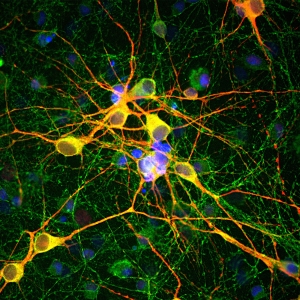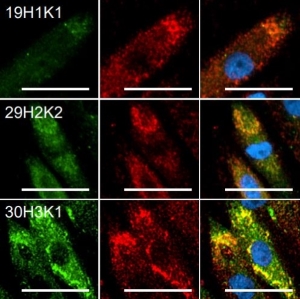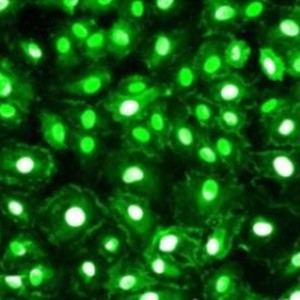Product Details
Product Sizes
| Size | List Price | Price | Cart |
|---|---|---|---|
| 100 ul | $325.00 | Add to Cart |
Rhodopsin is the protein in the mammalian retina responsible for the light sensitivity of rod cells, which are responsible for vision in low light levels. The rhodopsin protein is a member of the G protein-coupled receptor (GPCR) rhodopsin-like family. It exists with the ligand bound substance named retinal. Retinal can exist in two isomeric forms, 11-cis and 11-trans retinal. In the dark rhodopsin is associated with 11-cis retinal, but light cause the 11-cis form to flip to the 11-trans form, and this causes an alteration in the structure of the rhodopsin making it catalytically active resulting in a reduced rate of photoreceptor synaptic release. Activity is shut off by phosphorylation under the influence of rhodopsin kinase, the activity of which results in binding of visual arrestin (a.k.a. arrestin-1 and S-antigen), which prevents rhodopsin from interacting with and activating more transducin molecules. Defects in Rhodopsin are the cause of retinitis pigmentosa type 4. Patients typically have night vision blindness and loss of midperipheral visual field. As their condition progresses, they lose their far peripheral visual field and eventually central vision as well. |
Images
Rhodopsin staining of pig retinal sections (green). Rhodopsin is most abundant in the rod outer segments (ROS) of retina, clearly localized in rod membranes. The rod inner segments (RIS) and rod nuclei in the outer nuclear layer (ONL) are also seen in this image. Nuclear DNA was stained with DAPI (blue).Protocol on data-sheet.
Bovine retinal extracts blotted with rhodopsin. The antibody stains a band corresponing to retinal rhodopsin at about 35kDa. Bands about 70 kDa and 140 kDa are aggregated forms of rhodopsin. Protocol on data-sheet.






